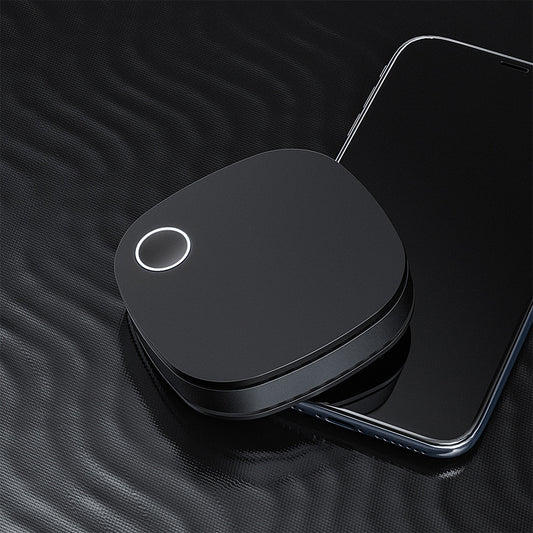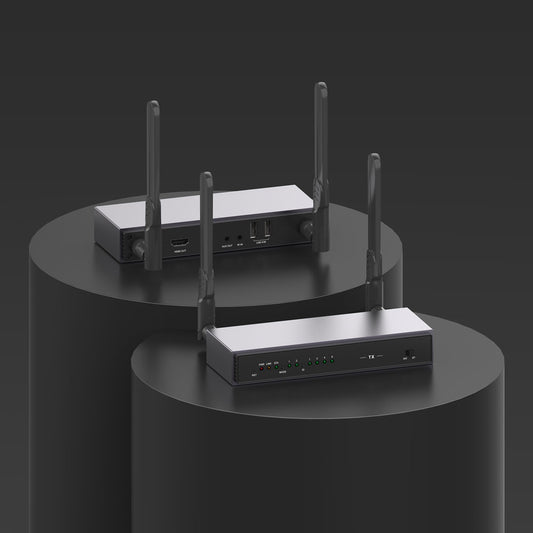
Wireless HDMI: What It Is And It Is Good For Gaming?
Wireless HDMI may be on your radar if you have a projector or simply want to get crafty with hiding away game consoles or other video sources.
Wireless Video HDMI is not a new idea, despite the fact that you may not have heard of it yet. With the help of this technology, your TV can wirelessly receive content in up to 4K quality from any media source. This covers gaming consoles, cable set-top boxes, and all other devices with HDMI interface. There is no lag or quality loss; all that is lost are the tangled cords and clutter.
However, how does Wireless HDMI function and should you purchase Wireless HDMI devices for your home?

How Does Wireless HDMI Work?
Wireless HDMI is an alternative to HDMI cables. HDMI cables have been the industry standard for transferring high definition video for more than ten years. However, there are a number of glaring drawbacks to HDMI cables. A few stray HDMI wires can make your entertainment center look like a rat's nest and confine your cable box and gaming consoles to one space.
You may still connect it to your monitor and device using an HDMI transmitter, but there is wireless connectivity between them. This means that you can get rid of annoying cables and are no longer subject to the influence of space.
Wireless HDMI can extend an HDMI connection up to 650 feet, although this depends on the HDMI transmitters being used and other elements.
There are many Wireless HDMI solutions available, and they are all rather simple to set up. All you need to do is connect a transmitter to an HDMI port on a video source and a receiver to an HDMI port on a TV.
Does wireless HDMI have lag?
The quality of your watching experience when streaming video from your device to your HDTV depends on whether or not you receive a continuous, high-quality stream free of buffering delays, interference, and disruptive script breaks. You is experiencing latency when you're in the middle of your favorite binge-watching session and your video gets stuck with that spinning pinwheel of nothingness.
The three categories of latency defined as human-to-computer communication are as follows:
1. A perception of instantaneity and real time is defined as less than 100 milliseconds, or 0.1 second.
2. Anything that lasts under a second is of good quality and gives the user a sense of interaction and engagement.
3. Latency lasting longer than 10 seconds is sufficient to ruin the experience and make the user uninterested.
Fortunately, latency has significantly improved for wireless HDMI transmitter and receiver systems. Since less than 100ms of latency is seen as instantaneous by humans, ProScreenCast set out to achieve even lower latency for the best real-time viewing and streaming experience. The remarkable latency of the SC02 is 80 ms, which is completely undetectable by the human eye.
Is Wireless HDMI Good for Gaming?
Higher latency wireless transmitters and receivers are just not fit for the lightning-fast, real-time streaming requirements of gaming contexts, and they can completely destroy a video chat session by rendering the entire dialogue incomprehensible.
Due to the wireless connection's slower bandwidth than a typical HDMI cable, the majority of wireless HDMI transmitters can only offer resolutions up to 1080p.
If you want a higher resolution, you can choose ProScreenCast SC01. It is a rare product on the market, which not only supports 4k@60Hz resolution, but also supports 2.4G/5.8G dual bands making sure you have full WiFi coverage and optimal speed for streaming.
Ultra-low latency, smooth gaming experience
You can watch the video below to watch the whole process.
Does Wireless HDMI require WIFI?
Wireless HDMI uses no home Wi-Fi network connection, just like conventional HDMI.
Wireless HDMI does not require a Wi-Fi connection, in contrast to screen mirroring programs like Apple AirPlay. Instead, it produces a direct wireless signal of its own between the transmitter and the receiver. If your Internet connection stops, you can still access all of your devices.
But having a home WiFi is never bad, and with WiFi you can transfer more content to the TV, not just the device's local files.
Chromecast and other streaming sticks against wireless HDMI
You might be asking if wireless HDMI is the same as a device like Chromecast. After all, it connects to the HDMI connector and enables wireless video streaming. But the tale is a little more intricate.
Because the streaming stick connects directly to the wi-fi and streams content from the internet, it functions fundamentally differently from HDMI transmitters in that they don't stream video from a source inside your home (such as a console, computer, etc.). Instead, they stream content from the internet.
For instance, to receive Netflix on the main screen, send the video to a wireless HDMI transmitter rather than streaming it on your desktop computer. You would be instructing the to go somewhere by using a streaming stick.
Conclusion
Wireless Video HDMI not only performs admirably at home, but also in the workplace. A presentation can be quickly streamed from your laptop to the TV or projector in the conference room. HDMI wireless video has a plethora of uses.
Find out about SC01, SC02 from ProScreenCast, which enables you to set your TV practically anywhere in your house or place of business without the cable mess.








